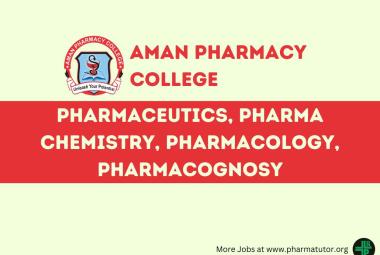ABOUT AUTHOR:
Vinay Kumar Singh
General Manager-Technical,
Mikasa Cosmetics Limited,
Ahmedabad, Gujarat
vinay.s@mikasacosmetics.com
Quality does not merely mean the goodness of a finished product. Of course, the quality of a finished product is the ultimate objective of a company; this is also what the consumers expect from the product. However, in order to achieve the desired quality in the finished product, it is essential that the whole plan, starting from the purchase of raw materials to the stage where the ultimate product reaches the consumers, has to contribute towards building quality into the product. Even after the product has reached the consumer, the reactions have to be fed back, so that the product enjoys continuous sales. Quality embraces all spheres of activity. In any organisation, the quality function involves all departments and all groups of personnel. No Quality Assurance Department or Manager will be in position to build and control quality. To build quality, each and every personnel; right from Managing Director to Attender need to contribute.
Thus distinct meanings may be given to “Quality”. viz: quality of design, and quality of conformance. Quality of design refers to the differences in the specifications for the same and use. On the other hand, quality of conformance relates to the ability to hold the specified quality of design. Quality control procedures are primarily concerned with the quality of conformance, though quality control techniques have helped in improving upon the design.
Thus a badly made article has a high quality of design, but a low quality of conformance, whereas a well made article has a quality of design, but a high quality of conformance.
The reputation and survival of a company will depend upon its ability to manufacture goods of acceptable and uniform quality at a given price, and to continue to maintain the established standards of quality.
The development of Science and Technology has been successful in providing consumers with better and consistent quality product. However, it should be emphasised that this development would not been possible without the development of better methods of measurements, and laying down of products specifications. The progress in the science of measurement has always played a fundamental part in the practical application of many researches in the fields of science and technology.
Quality Assurance deals with Quality Control and Good Manufacturing Practice. Thus the aim of quality assurance is the overall quality control of the product while following GMP.
Thus one can say that quality assurance is a term closely linked with quality control and includes integrated quality control and environment control. Integrated quality control means controlling the quality at each and every step, right from raw material, Intermediates, in-process materials to packaged product through finished product and packaging material. Environmental control is also important in maintaining the quality of the product. This includes hygienic production by keeping environmental contamination at zero level and training production personnel in the same. These all processes take place while following GMP, which ensures that the products are consistently manufactured to a quality appropriate to their intended use. Thus in a way quality assurance deals with the concept of Total Quality Control.
According to Sir Derrick Dunlop; former chairman of the British Medicines Commission, “Total Quality Control is a concept which strives to produce a perfect product by a series of measures designed to prevent or eliminate errors at every stage in production, though the responsibility for it belongs to the quality control department, it must be a corporate team effort embracing every facet of the company.
Quality Assurance has a broader perspective. It covers ways and means of achieving desired quality. It is mainly concerning good manufacturing practices which include:
1. Factory and plant design.
2. Hygienic methods of manufacture
3. General requirement of safety in material storage and handling.
4. Maintenance of proper records of quality control.
Various checks and balances to produce quality products are referred to as Quality Control.
Each product has value. A customer buys a product after considering its functional worth and cost. In an abstract way we can express :
Value = Worth
Cost
Functional worth are the properties which accomplish use of product. In other words these are the qualities which satisfy customer’s needs.
Quality control is essentially a tool which enables to maintain product quality at desired level. In other words it maintains value of a product.
Building up of desired quality into a cosmetic product starts long before it comes on production floor.
Following various aspects are taken into consideration before a cosmetic product is launched.
1. Need of consumer
2. Formulation research i.e., selection of proper quality raw materials, packaging components.
3. Control of manufacturing and packaging procedures.
4. Development of finished product analysis procedures.
5. Safety studies.
6. Testing methods.
Quality control is an ongoing process. It is a comparison with a standard whether a cosmetic product adheres to a certain criteria. Standard consist of:
1. Formula: which gives precise statement of different ingredients which comprise the product.
2. Operating Standards: This gives detail of manufacturing procedures, storage, filling and packaging.
3. Raw material Specification: Giving all details of characteristics and limits of deviations permissible.
4.Packaging material standards: It covers all components which go around the product shape, size, colour and other aesthetics and acceptance criteria and limits.
5.Finished product standard: It covers all characteristics essential for proper performance, durability and safety of product .
6.Testing methods: This covers tests procedures of all components .
Quality control could be basically divided into:
1. Raw material and packaging material quality control
2. Finished product quality control.
3. Production line quality control.
Raw material quality control:
The cosmetic raw materials varied in nature. Bureau of Indian Standards has done commendable work in fixing specification for many raw materials used in cosmetics. The raw materials which do not have IS standards are normally analysed as per I.P., B.P., U.S.P. or CTFA specification. The tests normally involve:
Physical Parameters: Colour odour, density, refractive index, viscosity, etc.
Chemical Parameters: Like assay of active ingredients, impurities present, etc.
Drugs & Cosmetic act specifies the limits of impurities in cosmetic raw materials like lead arsenic and heavy metals. Soon new specification may be added for other heavy metals.
Packaging material quality control:
Cosmetic packaging has special importance as it enhances aesthetics. Packaging acts as protectant to product which is sold at the same time it gives eye appeal. Many a times sale take place due to aesthetics which is also know as Impulse purchase.
Main purpose of packaging material quality control is to weed out defective packaging. The defects could be classified into:
1. Critical defects : Which lead to total spoilage like cracked neck of bottle. It may be unsafe for users.
2. Major defects: These defects are very obvious defects which may not functionally give problem.
3. Minor defects : These defects are minor in nature but will have an effect on aesthetic appeal.
Statistical techniques are used for sampling and interpreting the results.
Based on sampling plan, samples are drawn and inspected.
Finished product quality control :
Finished product quality control involves testing physical and chemical parameters.
1. Colour: Shade matching is one of the important aspect of quality control of cosmetics. Mostly colour matching is done by visual means by colour experts. It is always a comparison between a standard and sample lot. Visual observation are made on two films drawn of similar thickness depending on type of products either glass slides or drawn apparatus is used for producing film of uniform thickness. Colour matching computers are available nowadays.
2. Density - Specific Gravity : Usually specific gravity cups are used which are calibrated for particular weight of water.
3. Viscosity : Different types of instruments are available. Most popular one is called Brookfield viscometer. This instrument is based on spring which is attached to spindles. The viscosity is measured based on torque registered on the spring indicated on the dial. Other viscometers are falling ball viscometer, Gardner tubes or Fords cup which are based on different principles.
4. Melting point or boiling point : Usual capillary method is followed for melting point. Boiling range is also done using normal distillation set up.Now a days instrument to determine M.P./B.P. is available.
5. Hardness - Softness :
This kind of testing is done using penetrometer. A needle penetrates the block of desired mass and the depth of penetration indicates the hardness. There are other means like break points which are measured by specialised instrument.
6. Foam Tests :
Foam tests are done using cylinder methods and also there are instruments like Ross Miles apparatus used for measuring foam.
7. Accelerated stability tests :
Many cosmetic products are emulsions. Emulsions are prone to degradation. The tendency of emulsion degradation is usually checked by accelerated tests like storage of products at elevated temperatures like 40, 45, 50°C or putting them under high stress conditions like centrifugal force and artificial humidity conditions or exposed to extremely daylight conditions. These tests are also done for non-emulsion products to assess perfume stability or physical separation or sweating, etc.
8. Chemical tests :
These are usual tests carried out to find out acidity, alkalinity and assay of particular active ingredient, etc.
BIS (Bureau of Indian Standards) lays down specification for finished cosmetics as per Schedule S of Drugs and Cosmetics Act 1940. Perhaps India was the only country who had standards for Finished Cosmetics.
Instruments like thin layer chromatography, Gas Liquid chromatograph, High pressure liquid chromatograph and infrared and ultraviolet spectrophoto meters, Skin meter are widely used for raw material as well as finished product quality control.
Microbiological Quality Control:
It is imperative that each manufacturer should ensure products he manufactures are safe for use by his customers. Many of the bacteria which come from surrounding environment or coming from raw materials are not safe. Some of the micro organisms are relatively harmless. Microbiological quality control is aimed to ensure that all the finished products are free from harmful pathogenic bacteria and other bacteria are within the limit.
On (Production) Line Quality Control:
This type of quality control is practiced in large scale assembly type production units wherein so many different types of products are assembled into final product. Main aim is to ensure good quality of outgoing goods.
Procedure involves drawing of random samples from production line at different intervals and these samples are inspected and if the product quality is found below the standard. Entire production is taken up for 100% rechecking.
Now let us try to understand Aims & Objective of Quality Control, its Responsibilities and Advantages.
Aim and Objectives of Quality Control :
1. To establish standards of quality which are acceptable to consumers.
2. To ensure that the customers are provided with products which conform with the standard specifications.
3. To locate and identify process faults and defects of products.
4. To ensure that defective items are not used.
5. Evaluation of quality standards of incoming material, product in actual manufacture and of outgoing product.
6. Judging the conformity of the process to the established standards, and taking suitable action when deviation are noted.
7. Evaluation of optimum quality obtainable under given conditions.
8. To improve quality and productivity by process control and experimentation.
9. To ensure that defective products are not passed to customer.
10. Developing quality consciousness both within and with out the organisation.
Responsibility of Quality Control :
1. To prepare plant control programme for the management.
2. To advice production department regarding uniformity of materials, quality aspect and specifications.
3. To advice manufacturing department about machinery, instruments and process control.
4. To assist purchase in the valuation of suppliers and defects of incoming materials.
5. To advice and assist in inspection and selection of sampling plan.
6. To assist sales in making use of quality and guarantee.
7. Developing procedure for good vendor-vendee relations.
8. To find losses and their causes.
9. To train quality control personnel in means of preventing defects.
10.To study and experiment special processes for eliminating the defects.
11. To analyse customer’s complaints report and make people quality minded.
Advantages of Quality Control :
1. A quality control program, helps in building an information system which assists in fulfilling the objective of a modern quality program.
2. From the concept of process behaviors, cause-effect relation study and experimentation involved in a quality program, a better understanding of the processes and product is obtained.
3. Improvement in quality.
4. Increased production under the same set up.
5. Helps in reduction of rework and adjustments.
6. Reduction in cost per unit.
7. Reduction in scrap.
8. Saving in excess use of material.
9. Reduction in production bottlenecks.
10. Enable the feed-back of inspection information to the designers, specification writers and operators and reduction in inspection.
11. Evaluation of scientific tolerances.
12. Maintenance of operating efficiency.
13. Less customer complaints.
14. Quality Consciousness
GOOD MANUFACTURING PRACTICE (GMP): Good Manufacturing Practice (GMP) is that part of Quality Assurance, aimed at ensuring that products are consistently manufactured to a quality appropriate to their intended use. It is thus concerned with both manufacturing and quality control procedures.
The object of GMP is, intially, the assurance of the quality of Cosmetic products and ultimately the safety, well-being and protection of the consumer.
The basic fundamental is that assurance of quality cannot be achieved by the testing of end product samples alone. The results of testing may help to draw some general inferences but a full understanding and evaluation of the TOTAL quality of the total batch of a product may only be obtained by considering other factors, that is by a system of Quality Assurance, of which GMP is an integral and very important part. The limitations of testing therefore impose on manufacturers, the need to do things right the first time and prevent errors at each and every stage of manufacture.
The adoption of Good Manufacturing Practices ensures that products are CONSISTENTLY manufactured to the quality required by their intended use. Quality Assurance is nothing more than a STATE OF CONFIDENCE which results from GMP which is monitored by means of quality control.
The elements of GMP are by now quite well known and almost every country has its own code and regulations. The basic requirements of GMP are that :
a) All Manufacturing processes should be clearly defined, and known to be capable of achieving the desired ends.
b) All necessary facilities are provided; including;
(i) Appropriately trained personnel.
(ii) Adequate premises and space.
(iii) Suitable equipments and services.
(iv) Correct materials, containers and labels.
(v) Approved procedures (including cleaning procedures).
(vi) Suitable storage and transport.
c) Procedures are written in instrumental form, in clear and unambiguous language, and are specifically applicable to the facilities provided.
d) Operators are trained to carry out the procedures correctly.
e) Records are made during manufacture (including packaging) which demonstrate that all the steps required by the defined procedures were, in fact, taken and that the quantity and quality procedures were those expected.
f) Records of manufacturing and distribution which enable the complete history of a batch to be traced, are retained in a legible and a accessible form.
g) A system is available to recall from sale or supply of any batch or product, should that become necessary.
As per Drugs And Cosmetics Act, Schedule M II, provides the requirements of GMP for Cosmetics. Now certification for GMP is available if any organization desires to follow it.
The ISO 22716 Good Manufacturing Practices (GMP) for cosmetics was introduced to provide guidelines for the production, control, storage and distribution of cosmetic products. It places emphasis on the quality of the cosmetic product in relation to the customer, and the traceability and accountability in the production and distribution process of the product.
In accordance with the ISO 22716, the manufacturing system of a company is audited and inspected on the following areas:
Complaint and recalls, Contracting/ subcontracting, Documentation and records, Internal audits and Laboratory quality controls, Material management, Packaging and labeling, Personnel, Premises, buildings or facilities, Production and in-process controls, Storage and distribution
By implementation of ISO 22716 following benefits can be achieved.
- Controls Hazards and Risks– Controls hazards and risks associated with cosmetic products, ensuring continuous improvement throughout the supply chain.
- Supply Chain Management– As an internationally recognised standard it enables organisations to manage quality and safety compliance in the cosmetic products supply chain.
- Legal Compliance-Written by cosmetic industry professionals it ensures you comply with international law by looking at regulators around the world.
Thus by following Quality Assurance, not only Products can be manufactured as per desired standard but it can also ensure safety of consumers and Products can be marketed anywhere in the World.
NOW YOU CAN ALSO PUBLISH YOUR ARTICLE ONLINE.
SUBMIT YOUR ARTICLE/PROJECT AT editor-in-chief@pharmatutor.org
Subscribe to Pharmatutor Alerts by Email
FIND OUT MORE ARTICLES AT OUR DATABASE










